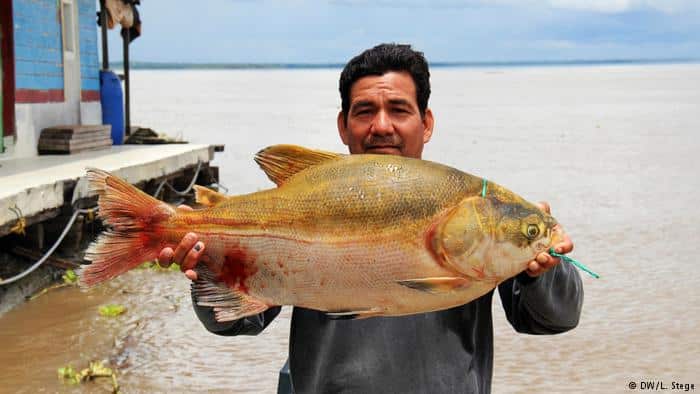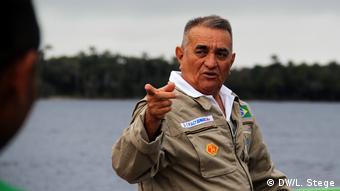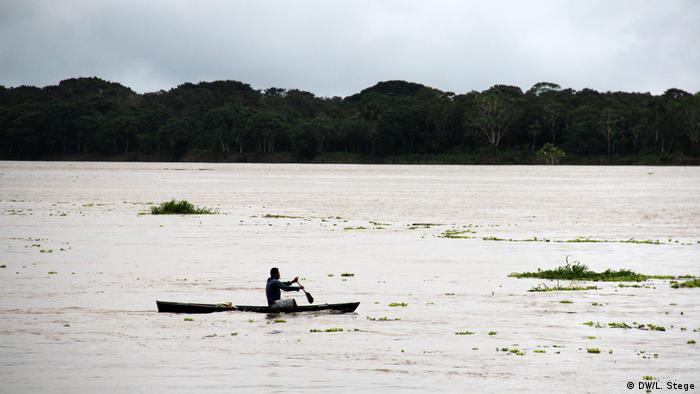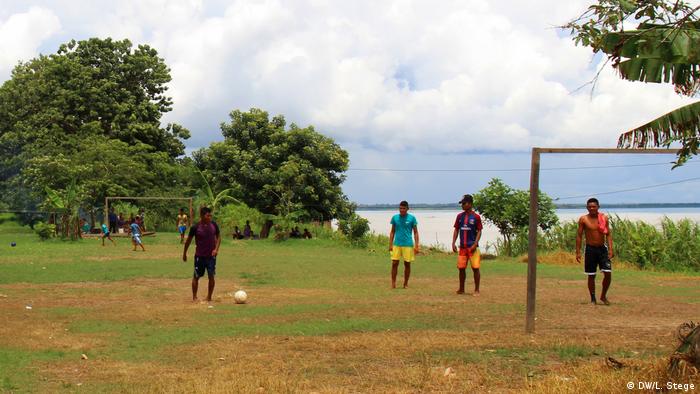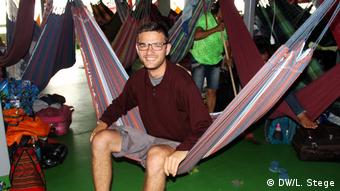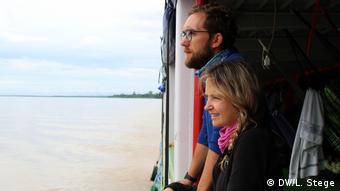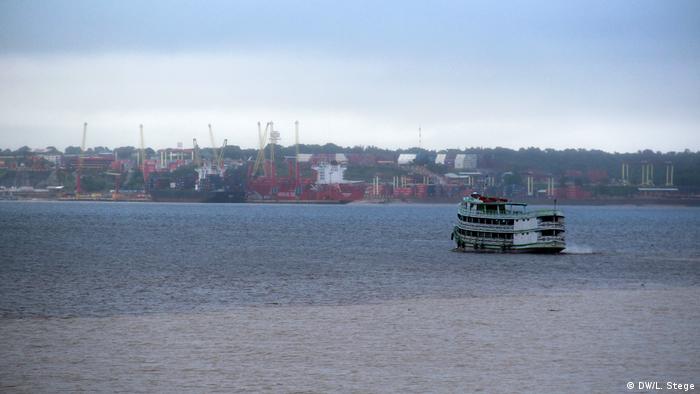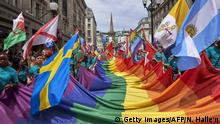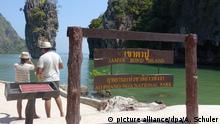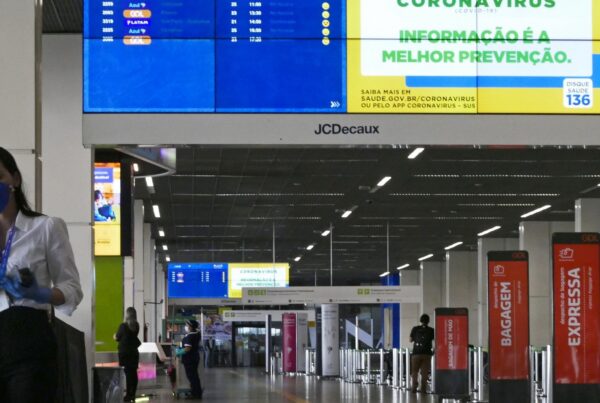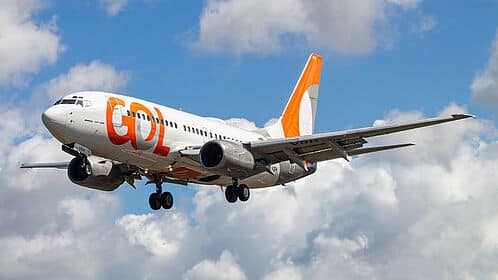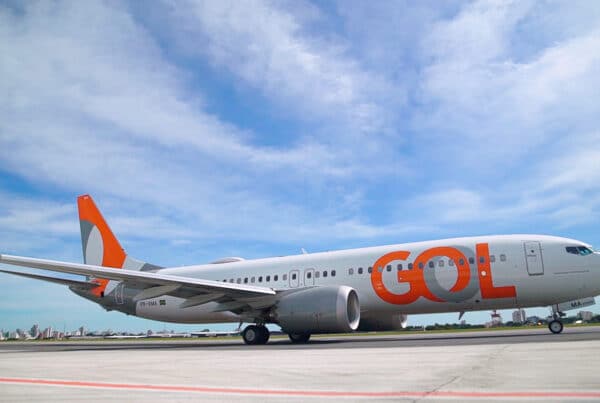Touring Brazil on the Amazon River
Flowing 6,992 kilometers through South America’s rainforest, the “jungle highway” is a transport route for everything. DW’s Lukas Stege chronicles his journey on the Earth’s longest river.
In the Brazilian small town of Tabatinga at the border triangle of Brazil, Peru and Columbia, I boarded the Esmeralda ship with 95 other passengers. The destination: Manaus. The trail: around 1,500 kilometers (930 miles) on the Amazon for four days.
Potatoes, coffee and cocaine
The young man appears nervous and stares at his backpack, which the dog has just nudged with his snout. Kyril Kaufmann is taken aside by a Brazilian policeman. “Open up!” the official says in Portuguese. The physics student from Switzerland follows the instructions and after a short search through his backpack, the policeman finds a plastic bag containing leaves. “Are those coca leaves?” Kyril nods. The policeman tips the contents of the bag into the river, closes the backpack and leaves the 22-year-old on the ship. The Swiss tourist has arrived from Peru. Coca leaves that the Incas chewed hundreds of years ago are legal there — but not here in Brazil. And neither the leaves nor the illegal product that is obtained from them escapes the drug detection dog’s fine sense of smell.
“We found 20 kilograms of coca paste on the boat earlier,” says José Almeida of the Brazilian federal police. The paste is an intermediate product in the production of cocaine. The discovery is not unusual; up to 30 kilograms (65 pounds) of the forbidden substance are found every day on the boats that leave here.
We depart early in the afternoon. In addition to passengers, the three-story ship also carries a wide variety of goods. All the small towns along the Amazon have to be supplied with everyday things. That’s why there are several bags of potatoes, water canisters, banana plants, coffee and even a few boxes of crisps on the bottom deck. Even in the deepest jungle, no one seems to want to do without tasty snacks.
“We’re transporting everything” says Alcy Alves, the somewhat grumpy-looking captain of Esmeralda. After this answer, I am hardly surprised when I spot a shrink-wrapped tumble dryer behind the bananas. On the two upper decks there is space for 300 hammocks. Most passengers are already dozing in their nets, rocking gently, while the rainforest slowly passes to the left and right of the ship.
A short side trip to nowhere
The bottle is empty and so goes straight overboard. Again and again I can see not only passengers, but also crew members throwing scraps of food, glass and plastic bottles into the Amazon River. I can’t help but think of the note outlining the rules of conduct on the ship, which the crew pressed into my hand at the beginning of the voyage. Point 6: Don’t throw garbage in the river. And it’s exactly this garbage that I see next to me on the shore as I carefully walk over a wobbly plank.
I’m in Caité. A place so small I can’t even find it on the map later. Here there are about 30 wooden pile houses directly on the Amazon — somewhere between Tonantins and Belezas.
Captain Alves and I can see the Esmeralda from the shore. Half an hour earlier, we had taken the ship’s much faster dinghy to head to Caité. “That’s what I do here every time and pick up fish at a friend’s house,” says the 67-year-old. While Alves now disappears into one of the wooden houses, I walk along the shore.
Suddenly a ball rolls towards me and I see some youngsters on a small football pitch. Clumsy, staggering in my flip-flops, I kick the ball back to the field. Then someone whistles — but it’s not a referee, it’s Captain Alves who beckons me back to the dinghy. Apparently, we need to return to the Esmeralda.
“These are Tambaqui,” he says as I arrive, panting slightly from having run across to him. And like heavy stones, the five bony fish hit the wooden planks of the boat’s deck. Every single one of them is supposed to weigh 10 kilograms. “And these are the little ones,” says the captain, and as he starts the engine I think I can see a smile on his face.
Miss the right moment to disembark
A sleep mask and earplugs are no help at all. I drag myself out of my hammock early in the morning. I couldn’t find a comfortable sleeping position at night, children were walking back and forth on deck and new passengers were noisily coming aboard. The night in a cabin with bunk beds is somewhat more expensive, but much quieter.
Jennifer Smith looks anxiously at her mobile phone. She has far greater worries than an uncomfortable hammock. Thanks to the GPS signal on her phone the young woman with her hair pulled back into a plait can see on a map how the Esmeralda is moving further and further away from Alvarães. That’s where she and her husband Richard Smith were supposed to have left the boat. “We wanted to go on to Tefé and then spend a week deep into the jungle to get to know flora and fauna,” says the 30-year-old through his thick beard. “We both quit our jobs at Twitter in London and are now spending six months travelling in South America.” And at that point it looks as if this trip will now lead the couple directly to Manaus, and not to the jungle.
Captain Alves tells me as he calmly sips his coffee: “From now on we won’t dock any more.”
The Smiths have missed their stop in Alvarães. Understandably, because the ship didn’t make a regular stop there but rather used the dinghy to transfer any passengers wishing to disembark. “That’s what we announced,” adds Alves, who apparently feels his breakfast is being disturbed. Alves also dismisses the idea that as neither Jennifer nor Richard speak Portuguese they were unable to understand this announcement. But then suddenly he jumps up and points to a ship that is approaching us on the Amazon. “That’s going straight to Tefé!” the captain yells and runs to the other side of the Esmeralda.
While Alves makes the dinghy clear, the couple from England quickly stuffs their hammocks into their backpacks. A short time later, both of them jump into the boat and the captain takes the passengers to the other ship — thereby returning them to their originally planned route. After this rush of activity, I happen to spot Alves a little later at breakfast. I just cautiously say a quick “thank you” to avoid interrupting his meal again.
The green-brown waters of the Amazon now mix with the black waters of the Rio Negro. Manaus is located where the two rivers meet. The Esmeralda moors head-on and the passengers leave the ship via the open gate at the bow.
Captain Alcy Alves has put on a khaki-colored overall of the Brazilian merchant navy to mark the occasion. He stands at the front of the ship and gives instructions to his crew. I ask the captain for a photo. “Again?” Alves exclaims and smiles — but only after I’ve taken the photo. At the gangway I encounter Kyril Kaufmann again. Where are you heading now, I ask the Swiss student as we leave the Esmeralda. Kyril puts on his backpack, tightens the straps and grins as he responds: “I don’t know.”
- Date 14.03.2018
- Author Lukas Stege
- Related Subjects Tourism, Brazil, Travel, Cruise holidays, The Romantic Road, Alps, Tourist attraction , Nature
- Keywords travel, tourism, Brazil, Amazon River
- Share Send Facebook Twitter Google+ More
- Feedback: Send us your feedback.
- Print Print this page
- Permalink http://p.dw.com/p/2uEKE
- Date 14.03.2018
- Author Lukas Stege
- Related Subjects Tourism, Brazil, Travel, Cruise holidays, The Romantic Road, Alps, Tourist attraction , Nature
- Keywords travel, tourism, Brazil,Amazon River
- Share Send FacebookTwitter Google+ More
- Send us your feedback.
- Print Print this page
- Permalink http://p.dw.com/p/2uEKE

